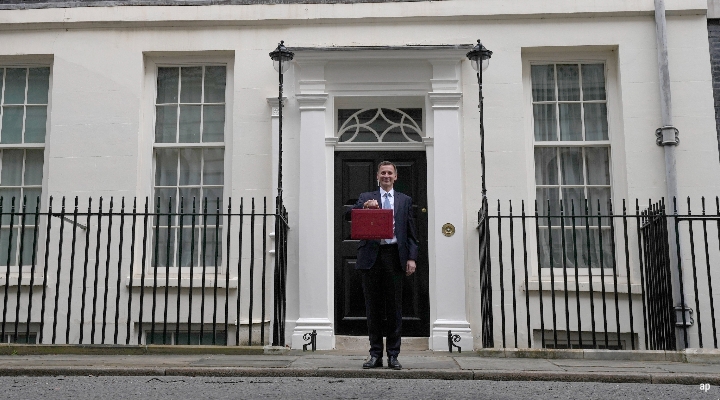
Personal finance journalists have waited nearly 10 years for a Budget that affects savers and investors and now two have come along at once.
Last autumn’s statement changed tax, capital gains tax and dividend allowances, pushing more people to pay more tax. This Spring Budget has surpassed expectations by proposing radical changes to pension taxation, with the aim of bringing more over 50s back into the workforce.
The scrapping of the pensions lifetime allowance (LTA) was, in Budget terms, a rabbit so large that the chancellor may have struggled to wrestle it from the hat.
(The LTA is being removed from next month but will then be abolished from 2024, a technical difference that will exercise professionals in the field in the coming tax year.)
It previously kicked in when a pension pot hit £1,073,100, an unimaginable sum for many, but fairly routine for doctors, senior civil servants, head teachers, or police officers – as well as financially comfortable people in the private sector such as lawyers, bankers and MPs.
There was also an increase to the “annual allowance” to £60,000 – and the Money Purchase Annual Allowance (MPAA) – so people will not be able to make “unlimited” pension contributions. The MPAA tends to give IFAs and tax accountants migraines so the changes will be welcomed.
As earnings and stocks markets have grown, there have been calls to shift the LTA higher to stop people falling into the tax trap. You can accumulate a pot above this level but you will trigger a “benefit crystallisation event” and pay a “chargeable amount” to HMRC.
This means a hefty tax charge. The rules are complex and technical. Previously people approaching retirement have viewed the LTA as a “cliff edge” to avoid if possible.
Weekend papers trailed the idea that the LTA would be uprated to £1.8 million (The Times) but the Telegraph pitched this at £1.5 million. The chancellor today showed the frailty of relying on Budget leaks and may be seen to have played a blinder by teasing the public with a leak that’s half-true. Journalists may not be as happy, though.
Alongside a boost for a “mid-life MOT” and the oddly-worded “returnerships”, the Sunak government wants to include the middle-aged people who are able to work but don’t.
This isn’t just an altruistic move on the Treasury’s part to promote the “virtue of work” as Hunt said. It will bring a new slab of taxpayers back on the books, allowing the government to pay for policies on childcare, roads, quantum computers, nuclear energy and draught beer. For a “go it alone” Conservative party, Hunt’s vision sounds remarkably similar to the high-tax, high welfare model used by, say, Sweden, which has 1 million more people over 50 in its workforce.
The biggest beneficiaries of the LTA bombshell look to be financial advisers, who can give wise counsel at cost to mass affluent and high-net-worth individuals about how to maximise their pension pots while keeping in the £60,000 annual limit. Fund managers, property companies, and Sipp providers are also likely to see direct benefits. Investment growth need no longer be feared as “too much of a good thing” - although 2022 will be a reminder to many that stock markets can have dismal years too. The changes in policy will also shift the dynamic between savings and pensions, including ISAs and Lifetime ISAs, and also have a knock-on effect on buy-to-let investments.
How Much Will it Cost?
According to the Budget red book (page 76), the removal and abolition of the LTA will cost £135 million in the coming tax year (2023-2024), £210 million in the following, then £770 million, £800 million and £835 million in subsequent years. There are also costings for the increase to the annual allowance and the MPAA that run into the hundreds of millions of pounds over the coming tax years. The government is hoping that the return to work of higher and additional rate tax payers will balance some of this cost out.
Wealth Managers React
Les Cameron, head of technical at M&G Wealth, said: “What we need to know now is the detail of how this will be implemented, as the Lifetime Allowance limit is referenced in many different areas of pension legislation affecting, among other things, the amount of pension commencement lump sum that can be paid.
“Thinking more widely, this should see a reduction in attractiveness of other tax-incentivised vehicles, such as venture capital schemes, which were the natural go-to places for those who’d had their pension funding limited by the LTA.”
On the annual allowance, Cameron says:
“The increase to the annual allowance limits will clearly be welcomed by those who have been most impacted, predominately those on higher incomes and in defined benefit pension schemes. It also gives additional scope for those with defined contributions schemes to make increased contributions. With the corporation tax change rumours unfounded, this increase will be particularly welcomed by small business owners with the potential for higher rates of corporation tax relief next year.
“In terms of impact the increase from £40,000 to £60,000 means that in 2023/24 a member of a defined benefit scheme can see their pension increase by £3,750 instead of £2,500 before breaching the allowance. That’s a tax saving of £8,000 for higher rate taxpayers.”
Gary Smith, financial planning partner at Evelyn Partners says:
“The absence of an LTA from April will return us to a state of affairs that existed until 2006, when the limit was introduced at the level of £1.5 million before rising to £1.8million in 2011. That marks a welcome and unexpected change of direction as the LTA had been reduced in recent years, and was scheduled to be frozen until 2026.
“The frozen annual allowance has restricted those in generous DB schemes, and can also be a pain for the self-employed or business owners who have variable income from year to year – although this is ameliorated by the ability to carry forward unused allowances from the previous three years. Without careful monitoring it is an easy tax trap for high-earners to fall into as it is up to the individual to make sure they don’t exceed the limit.
“Finally, the MPAA – introduced to prevent wealthier savers recycling their tax-free lump sum into new pension arrangements – is back to where it was originally set at £10,000. The £4,000 limit meant that anyone going back to work after accessing their pension funds flexibly would fill the allowance with a salary of £50,000 at the auto-enrolment 8% contribution rate.
“Triggering the MPAA also wipes out your three years of unused carry-forward allowances. Whether or not it encourages older economically inactive cohorts back to work, we would welcome a boost to the limit as it is an obscure tax trap that catches out a lot of otherwise financially astute savers.”
Labour Under Observation
Smith adds, however, that there could be unintended consequences to the policy overhaul.
“There are some potential snags that could make the benefits of these higher allowances ambiguous for some savers. One is that a sudden scrapping of the LTA will produce a range of outcomes affecting savers who are in slightly different positions pre- and post-retirement. It remains to be seen whether likely cliff-edges will be smoothed out in some way.
“Two, the complex tapered allowance remains in place, even with a slightly higher threshold. For employees, this will mean someone who is earning enough to take advantage of the improved £60,000 annual alllowance will almost certainly trigger the taper, and therefore never benefit from the extra headroom – unless the taper is reformed.
“The taper is an ungainly distortion on its own as it punishes those who had hoped to build up their pension pots late in their career when their earnings have peaked, after perhaps a couple of decades of prioritising mortgage payments and the costs of raising children.”
“Three, those who took out fixed protection against the falling LTA in 2012, 2014 and 2016, and have as a result not made pension contributions for several years in order to preserve previous higher lifetime allowances, might now consider resuming pension contributions. However, making pension contributions will automatically result in fixed protection being lost, and this would result in tax-free cash reducing to the current level of £268,275.
“A further risk in abandoning fixed protection is that a general election is approaching. There is therefore some risk that a change of government could result in the reimposition of an LTA, so Labour’s reaction to these moves will be keenly watched.”
The author or authors do not own shares in any securities mentioned in this article. Find out about Morningstar's editorial policies.








.jpg)


















